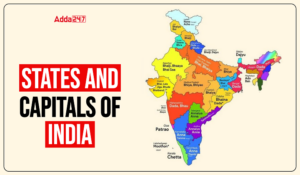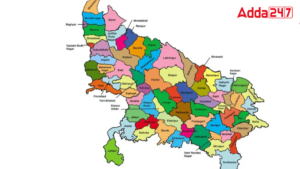New Delhi’s iconic Rajpath, the road from Rashtrapati Bhavan to India Gate, is all set to be renamed Kartavya Path (the Path of Duty), in line with PM Modi’s stress on the abolition of symbols relating to the colonial mindset. As the revamped ceremonial boulevard gets ready along with the Central Vista lawns to be unveiled to the public next week after a 20-month gap.
Bank Maha Pack includes Live Batches, Test Series, Video Lectures & eBooks
Why Kartavya Path:
The new name – Kartavya Path – comes in line with PM Modi’s thrust on shedding names and symbols reminiscent of the British era and the last vestiges of colonialism. On August 15, 2022, addressing the nation from the ramparts of Red Fort on India’s 75th Independence Day – Azadi ka Amrit Mahotsav – PM Modi emphasised doing away with names and symbols which stemmed from the colonial mindset. Even before that, the government has been renaming iconic landmarks, including the address of the Prime Minister’s official residence. While it was earlier on Race Course Road in New Delhi, it was changed to Lok Kalyan Marg. Just days ago, the PM had unveiled the Indian Navy’s new ensign which had shed the St George’s Cross. Kartavya Path stresses PM Modi’s emphasis on “duty” in the run-up to 2047 as India marks 100 years of Independence.
Before Rajpath:
- In 1911 the British Imperial Government and the Viceregal administration determined that the capital of the British Indian Empire should be moved from Calcutta to Delhi.
- Accordingly, construction in that year began on the district of New Delhi, which would serve as the purpose-built administrative capital of the Indian Empire. The British Raj duly turned to Sir Edwin Lutyens to construct the new city.
- Lutyens conceived of a modern imperial city centred around a “ceremonial axis”, such axis being the large boulevard now called the Rajpath. Lutyens wanted a panoramic view of the city of Delhi from the viceregal palace.
- Consequently, the view from Raisina Hill runs unhindered across Rajpath and the India Gate, and is obstructed only by the National Stadium. Most of the buildings surrounding the Rajpath were designed by Lutyens and the second architect of the project, Sir Herbert Baker. The importance of such buildings in the government of India ensures the road’s importance.
From Kingsway to Rajpath to Now Kartavya Path:
- The Kartavya Path, which translates to “Boulevard of Duty” runs all the way from Rashtrapati Bhavan (President’s House) on Raisina Hill, through Vijay Chowk to India Gate. It stretches westward from the National Stadium through the War Memorial arch (India Gate), to the Central Secretariat buildings.
- When built the road was named King’s Way, or Kingsway, in honour of the Emperor of India George V, who had visited Delhi during the Durbar of 1911, and where the Emperor formally proclaimed the decision to move the capital.
- The name was similar to Kingsway in London, which had been opened in 1905, and which was also a custom-built arterial road, and which had been named in honour of George V’s father, Edward VII (as King of the United Kingdom).
- Following the independence of India the road was given its Hindi name, ‘Rajpath’, in place of its English designation. This represents a mere translation more than a substantial renaming, since ‘Rajpath’ in Hindi is broadly analogous in meaning to ‘King’s Way’.
It’s Constituents:
- The Rashtrapati Bhavan, the official residence of the President of India. It was the Viceroy’s residence before India got its independence from Britain.
- North Block and South Block, also called the Secretariat Building. North Block houses the offices of Finance and Home ministries. South Block hosts External affairs and Defense ministries. Other important offices like some of the Prime Ministers Offices are also in the Secretariat Buildings.
- Vijay Chowk is a spacious plaza and the site of Beating the Retreat ceremony, which takes place on 29 January each year, which marks the end of Republic Day celebrations, in which Military Bands, Pipes and Drums Bands, Buglers and Trumpeters from various Army Regiments besides bands of the Navy and Air Force take part, with the President of India as the Chief Guest.
- India Gate is India’s war memorial arch in honour of those who died in the First World War and the Second Anglo-Afghan War. It is also India’s memorial of the unknown soldier.
- National War Memorial (India), Since Independence, more than 25,000 soldiers of the Indian Armed Forces have made the supreme sacrifice to defend the sovereignty and integrity of the country. It stands as testimony to the sacrifices made by the Indian Armed Forces during various conflicts, United Nations Operations, Humanitarian Assistance and Disaster Response Operations since Independence.




 States and Capitals - How Many States in...
States and Capitals - How Many States in...
 Anil Nagar, Founder & CEO of Adda Ed...
Anil Nagar, Founder & CEO of Adda Ed...
 Top-10 Smallest Districts of Uttar Prade...
Top-10 Smallest Districts of Uttar Prade...

